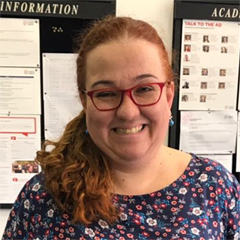Listen, are you really teaching listening? (Part 1)
Before I start this post, I must warn you: this was NOT written by someone who has great expertise on this area. It was elaborated by someone who, like many other teachers, have an inquisitive mind and a wish to make students’ language-learning path a bit less of a bumpy ride. I am also not a specialist, and if you came here looking for universal answers, I’m afraid you’ll end up with even more questions. I am a big nerd, that’s what I am.
But enough of me.
I was delivering an A2 lesson one of these days, and my main aim was to work with the development of listening skills. My group had stated more than once that their greatest challenge was listening, so that was one of the classes when I wanted to work with lowering their affective filter and to reinforce that they needed to focus on the task rather than on understanding every single word, you know, that overly used mantra every English teacher knows so well.
Then, while I was going through the instructions of one of the tasks, a very frustrated voice echoed, asking me why I insisted on saying that they didn’t have to understand word by word. There was silence in the room for some seconds, followed by an avalanche of questions, and all of them wanted to know how they could work towards achieving that level of L2 understanding of oral production. That was when it hit me: I knew very little on the topic.
After some reading of blogs and some indications of books I came to one possible conclusion: I had to work with decoding rather than listening skills.
Since I was able to identify this major issue in the second half of the term, I wasn’t able to do all the extensive work I know I needed to do with them, but I tried to focus on the 3 major areas, which were identifying individual sounds, working out where the words begin and end and making use of sentence stress. These three areas were extracted from the Oxford University Press blog post by Rachael Roberts, called “Decoding Skills: a Neglected Part of Listening Comprehension?”
For each exercise I planned to deliver, I had to consider I would work with repeating the audios, working with stations (each group had their own mobile device from where they could play the audios from), and also allowing some students to read the audio script, in order to make them associate the sounds they were hearing with their written representation. In some of the tasks, I even returned to the same audio, after some classes, and checked their perception of progress in terms of listening comprehension. If anyone is interested in more details on how materials were adapted, I will be glad to share, but this is a very incipient level of research at the moment.
Informally collecting the results of this attempt, I noticed something amazing: most of my students felt they were feeling less frustrated and more secure when it came to listening tasks, both in class and in real life. That made me realize that I am on the right track. This is why this post is part 1: I will continue to research this in the following terms, and who knows, maybe I will have more positive results to post here. There is a lot of reading to be done, a lot of investigation to be made, a lot of possibilities ahead, but I’m confident, especially because I know I am offering more appropriate guidance to some of my students, and this is what moves my professional self.




